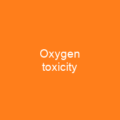Understanding Blood: The Life-Giving Fluid
Blood is more than just a fluid; it’s the life-giving essence that courses through our veins, delivering vital nutrients and oxygen to every cell in our body while removing waste products. But what exactly does this mysterious substance do, and how does it work its magic?
The Composition of Blood
Blood is primarily composed of blood cells suspended in a liquid called plasma. Plasma makes up about 55% of the total volume of blood and contains proteins, glucose, mineral ions, and hormones. The most abundant cells are red blood cells (RBCs), which contain hemoglobin that facilitates oxygen transport.
Red Blood Cells: The Oxygen Carriers
Imagine RBCs as tiny submarines, ferrying oxygen to every corner of the body. Each microliter of blood contains approximately 4-6 million erythrocytes (red blood cells), each packed with hemoglobin that binds to oxygen and distributes it where needed.
The White Blood Cells: Guardians of Health
White blood cells, or WBCs, are like the body’s elite soldiers. They help resist infections and parasites, ensuring our immune system is always on high alert. Cancer of these cells is called leukemia, a condition that can be both challenging to diagnose and treat.
The Platelets: The Clotting Heroes
Platelets are the unsung heroes of blood clotting. With 200,000-500,000 thrombocytes (small nucleated cells) per microliter of blood, they play a crucial role in stopping bleeding and ensuring our circulatory system remains intact.
Blood Circulation: The Heart’s Symphony
The heart acts as the conductor of this symphony. It pumps blood through arteries and veins, with arterial blood carrying oxygen to tissues while venous blood carries carbon dioxide away from them. This continuous flow ensures that every cell in our body receives what it needs to function.
Key Functions of Blood
Blood performs many important functions within the body, including supplying oxygen, removing waste, regulating core body temperature, and coagulating when a blood vessel is broken. The average adult has a blood volume of roughly 5 liters, with plasma making up about 2.7-3.0 liters.
Regulation and Homeostasis
Blood pH is regulated within a narrow range of 7.35-7.45, making it slightly basic (compensation). The acid-base balance and respiration are carefully regulated by homeostatic mechanisms, mainly through the respiratory system and urinary system.
Cell Production and Degradation
Blood cells are produced in bone marrow through a process called hematopoiesis. Red blood cell production is limited to specific bones in adults, while the thymus gland plays an important role in producing T lymphocytes during childhood. The liver produces clotting proteins, endocrine glands produce hormones, and the hypothalamus regulates the watery fraction of plasma.
Oxygen Transport
98.5% of oxygen is chemically combined with hemoglobin. Hemoglobin has an oxygen binding capacity between 1.36 and 1.40 ml O2 per gram hemoglobin, making it a highly efficient carrier. Arterial blood carries oxygen away from the heart, while venous blood returns deoxygenated blood back to the lungs.
Color and Other Functions
Hemoglobin is the principal determinant of the color of blood. Each molecule has four heme groups that interact with various molecules, altering its exact color. Arterial and capillary blood are bright red due to oxygen imparts a strong red color to hemoglobin. Deoxygenated blood is darker, appearing in veins.
Disorders and Treatments
Blood disorders can range from anemia (low hemoglobin values) to leukemia (cancers of the blood-forming tissues). Anemia may require transfusions, while treatments for other conditions include crossmatching to ensure compatible blood products are used. Bloodletting is a rare but still used practice in modern medicine.
History and Culture
The history of understanding blood dates back to ancient times. Robin Fåhræus suggested the Ancient Greek system of humorism was based on blood clotting, with four layers observed when blood clots: dark clot (black bile), red blood cells (blood), whitish layer (phlegm), and clear yellow serum (yellow bile).
Conclusion
Blood is a complex and vital substance that keeps us alive. From its composition to its functions, it plays an indispensable role in our health and well-being. Understanding blood helps us appreciate the intricate mechanisms of life and the importance of maintaining this precious fluid.

You want to know more about Blood?
This page is based on the article Blood published in Wikipedia (retrieved on March 13, 2025) and was automatically summarized using artificial intelligence.






